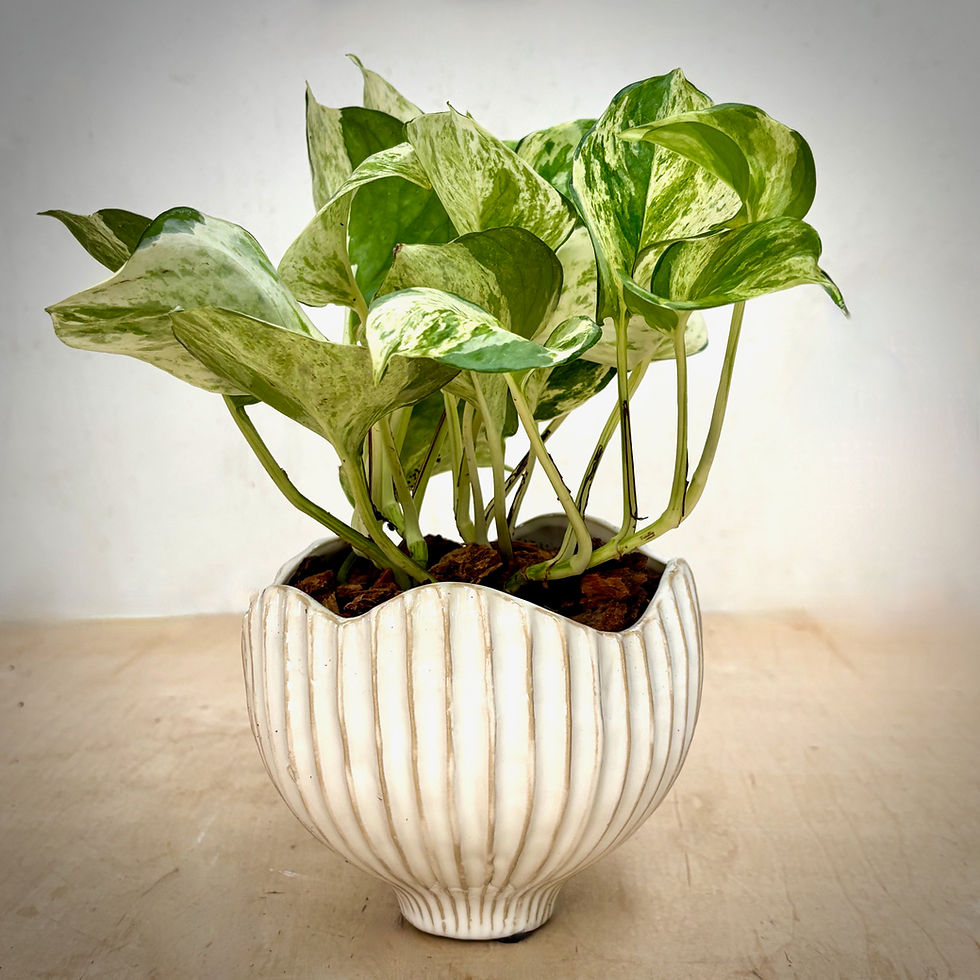Chinese Evergreen (Maria)
7" blue cement planter
Chinese Evergreen (Maria) in Blue Cement Planter
Chinese Evergreen Care
LIGHT: By nature, Aglaonemas (Chinese Evergreen) do best in well-lit locations such as a window sill with eastern light exposure. Bright, but indirect sunlight is optimal. Be careful not to put your Aglaonema in full sun, as the leaves will burn. If you don’t have an ideal location for your Aglaonema, use a Grow Light. Your Aglaonema will also tolerate, and even thrive in, low light areas. In most cases, artificial light found in windowless offices proves enough for this tough plant.
WATER: Water your Aglaonema when the top 50% of the soil is dry. Water until liquid flows through the drainage hole at the bottom of the pot and discard any water that has accumulated in the saucer.
HUMIDITY: This plant can survive in a low humidity environment, but it will thrive with a higher humidity level. Mist the leaves regularly using a Mister to raise the humidity.
TEMPERATURE: Aglaonemas prefer temperatures in the 60’s and 70’s. Avoid cold drafts and sudden temperature changes.
FERTILIZER: For best results, use a general houseplant fertilizer once a month during the spring and summer such an all purpose fertilizer (20-20-20).
TOXICITY: Moderately toxic to pets and humans. Typically, ingestion will cause mouth and stomach irritation and possible vomiting.
ADDITIONAL CARE: A common problem with Aglaonema is called ‘tipping’ when the tips of the leaves dry out and turn brown. This can be caused by a variety of issues like overwatering, too much fertilizer, etc. The most common cause is tap water, which contains salts, chlorine, and fluoride. If you do not have a filtration system, leaving the tap water in an open container overnight before watering can help remove some of the chlorine and fluoride. If your Aglaonema is in need of a trim, clean up your plant using clean, sharp Plant Snips.




























